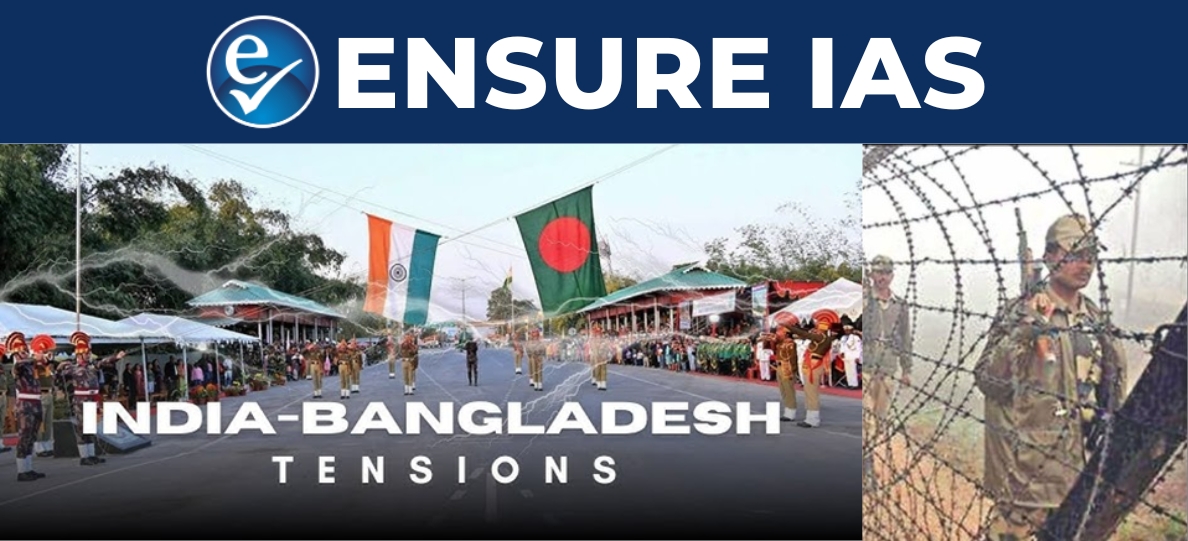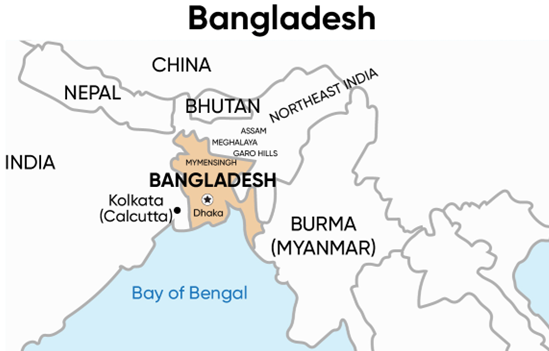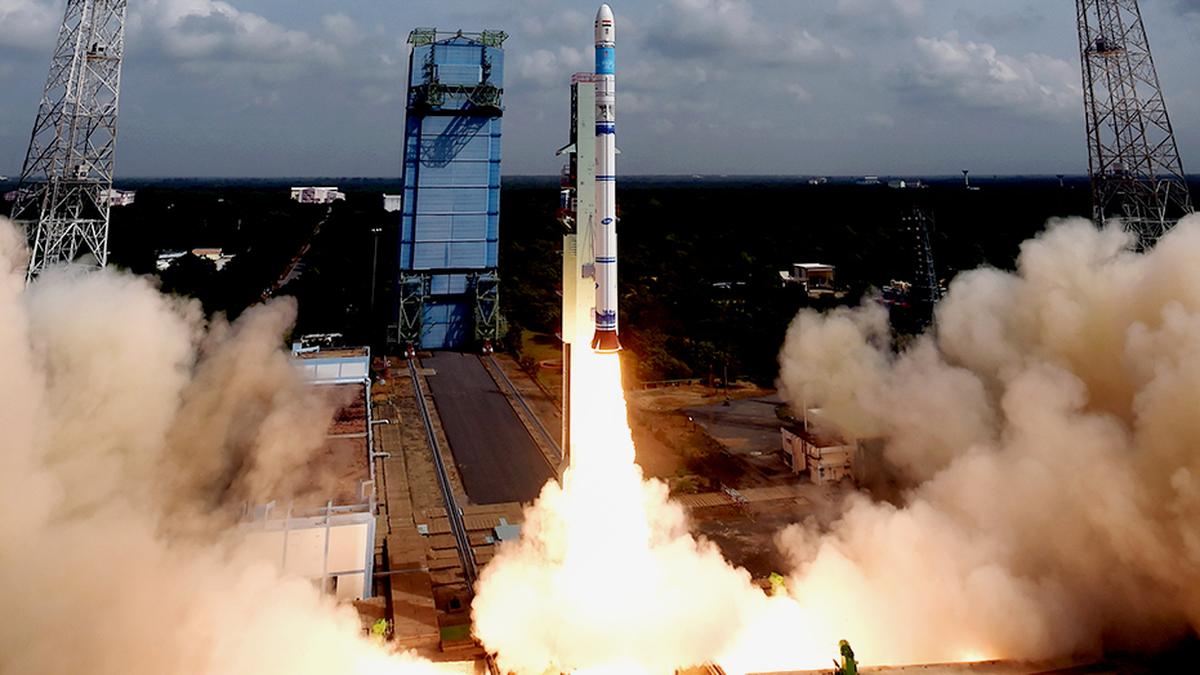- Courses
- GS Full Course 1 Year
- GS Full Course 2 Year
- GS Full Course 3 Year
- GS Full Course Till Selection
- Answer Alpha: Mains 2025 Mentorship
- MEP (Mains Enrichment Programme) Data, Facts
- Essay Target – 150+ Marks
- Online Program
- GS Recorded Course
- Polity
- Geography
- Economy
- Ancient, Medieval and Art & Culture AMAC
- Modern India, Post Independence & World History
- Environment
- Governance
- Science & Technology
- International Relations and Internal Security
- Disaster Management
- Ethics
- NCERT Current Affairs
- Indian Society and Social Issue
- NCERT- Science and Technology
- NCERT - Geography
- NCERT - Ancient History
- NCERT- World History
- NCERT Modern History
- CSAT
- 5 LAYERED ARJUNA Mentorship
- Public Administration Optional
- ABOUT US
- OUR TOPPERS
- TEST SERIES
- FREE STUDY MATERIAL
- VIDEOS
- CONTACT US
Why Bangladesh Has Objected to India’s Border Fencing
Why Bangladesh Has Objected to India’s Border Fencing

- India and Bangladesh share a 4,096.7 km border, the longest land border India has with any of its neighbors.
- Recently, tensions have arisen between the two countries over border fencing.
Recent Political Updates in Bangladesh include:
|
1. Recent Diplomatic Tensions
- India Summons Bangladesh’s Acting High Commissioner: On January 13, 2025, India summoned the Bangladesh Acting High Commissioner to India, Nural Islam, to discuss concerns related to border security and fencing.
- India assured Bangladesh that it was following all existing agreements regarding border security.
- Bangladesh’s Response: Prior to India’s summon, Bangladesh had called in India’s High Commissioner in Dhaka, Pranay Verma, to express deep concern over the actions of the Border Security Force (BSF).
- Bangladesh alleged that India had violated a bilateral agreement regarding the international border, particularly in the context of fencing.
-
Incidents in Malda and Cooch Behar:
- In Malda, Bangladesh's Border Guards Bangladesh (BGB) attempted to stop the construction of a barbed-wire fence in Kaliachak No 3 block (India's side of the border), along Bangladesh’s Shibganj in Rajshahi district.
- In Cooch Behar (West Bengal), the construction of a fence in the Mekhliganj area, near the Dahagram-Angarpota enclave, faced resistance from Bangladesh.
- Villagers in India began erecting the fence to prevent cattle from straying across the border, but the BGB objected.
2. The 1975 Border Guidelines and Fencing Disputes
- The 1975 Joint India-Bangladesh Guidelines: The guidelines state that no defense structure can be constructed within 150 yards of the international border.
- This provision has become a major point of contention between the two countries.
- India’s Interpretation of Fencing: India does not consider barbed-wire fencing (SRF) as a defensive structure.
- India maintains that fencing is primarily aimed at curbing trans-border crimes and preventing cattle from straying across the border, not for military defense.
- Bangladesh’s Objection: Bangladesh considers the construction of fences within 150 yards of the border as a violation of the 1975 guidelines.
- It views any form of fencing, especially “smart fencing” with CCTV and electronic surveillance tools, as an infringement on its sovereignty and a potential threat to its security.
3. Border Villages and Complex Terrain
- Complicated Border Geography: The border between India and Bangladesh is complex due to historical issues such as the Partition of India in 1947. Many villages and houses sit directly on the international boundary, making it difficult to implement the 150-yard rule for fencing.
-
Examples of Complex Areas:
- Jalpaiguri: Villages are situated right on the border, making it impossible to construct a fence 150 yards away.
- Dahagram-Angarpota: This is a Bangladeshi enclave inside India. Because of this, fences are often placed directly on the border line.
- Fencing and Access to Villages: In areas where villages sit on the border, gates are installed to allow people to cross freely between India and Bangladesh.
- These gates open and close according to schedules agreed upon by local administrations from both sides. In emergencies, gates can be opened on short notice.
4. Specific Disputes Over Fencing in Malda and Cooch Behar
-
Malda District:
- The BSF, in collaboration with the Central Road Works Department, was building a single-row fence in Kaliachak No 3 block (India's side) near Shibganj, Bangladesh.
- The BGB intervened and objected to the work, citing the 1975 guidelines.
- India’s DIG (South Bengal Frontier) N K Pandey confirmed that the situation was normal, and India responded to Bangladesh’s objections.
-
Cooch Behar District:
- In Mekhliganj, near the Dahagram-Angarpota enclave, villagers started constructing the fence, assisted by the BSF.
- Bangladesh’s Border Guards tried to halt the fencing work, leading to further objections.
- The villagers said that the fence would help stop cattle from entering India and grazing on crops.
5. Why Bangladesh Objects to India’s Fencing
-
The 150-Yard Rule:
- Bangladesh’s main objection to India’s fencing plan is the violation of the 1975 border guidelines, which prohibit building defense structures within 150 yards of the border.
- Bangladesh’s security concern: Bangladesh views any form of fencing as a security threat, especially “smart fencing”, which is equipped with CCTV cameras and other electronic surveillance tools.
- Bangladesh fears that such measures would allow India to monitor its territory.
-
Impact on Border Residents:
- Fencing also impacts the people living along the border, especially in villages like Dahagram-Angarpota.
- These residents often have familial, economic, and social ties across the border.
- Fencing makes daily activities more difficult and disrupts traditional cross-border movements.
-
Fencing for Animal Control and Crime Prevention:
- India’s primary reason for fencing is to stop the movement of cattle and to prevent cross-border smuggling and illegal activities.
- The SRF (single-row fence) is not meant for military defense.
- It aims to reduce the movement of cattle and check trans-border crimes like human trafficking, illegal migration, and terrorism.
6. India’s Smart Fencing and Surveillance
- Smart Fencing: India has introduced “smart fencing” in some parts of the border, which includes CCTV surveillance and electronic monitoring to keep track of illegal activities.
- This form of fencing is controversial as Bangladesh objects to its proximity to the border, arguing that it could be used to spy on Bangladesh.
- Security Issues: About 60% of cross-border crimes happen in areas where fencing is not present or where villages sit directly on the border.
- The smart fencing is seen as a tool to control these issues, but Bangladesh has not agreed to it, citing sovereignty concerns.
7. Current Status of Border Fencing
-
Progress of Fencing:
- As of 2023, India had fenced 3,141 km of the India-Bangladesh border out of the total 4,156 km.
- The fencing project has been delayed in some areas due to challenges like land acquisition, opposition from villagers, and complex terrain.
- West Bengal's Role: West Bengal shares 2,216.7 km of the border with Bangladesh.
- As of 2023, 81.5% of the fencing was complete, but 900 km of the border is riverine, where fencing is not possible.
-
Unfenced Areas:
- Some small patches of the border are still unfenced due to challenges in terrain and negotiations with Bangladesh.
- Areas along rivers are guarded by the BSF’s water wing, as fencing cannot be installed on water.
8. The Broader Context of India-Bangladesh Border Relations
- Strategic and Economic Significance: The border has strategic, economic, and humanitarian importance.
- While both countries aim to curb cross-border criminal activities, they also need to respect the rights and living conditions of the people living along the border.
- Humanitarian Considerations: The border population often has cultural and familial ties across both sides, making it crucial to balance security measures with humanitarian needs. India and Bangladesh will need to cooperate to manage these complexities effectively.
About Bangladesh:
Bangladesh is a South Asian country bordered by India on the west, north, and east, Myanmar (Burma) to the southeast, and the Bay of Bengal to the south. It is one of the most densely populated countries in the world, with a rich history, diverse culture, and growing economy. Geography and Demographics
Bangladesh is located on the delta of three major rivers— the Ganges, Brahmaputra, and Meghna— making it prone to floods but also providing fertile soil for agriculture. History and IndependenceEarly History:
Partition of British India (1947):
Independence Movement:
Government and Politics
Bangladesh has experienced political instability in the form of protests, strikes, and violence, particularly between the Awami League and the BNP. EconomyBangladesh has made significant economic progress over the last few decades, despite facing challenges like natural disasters and political instability. Key Economic Sectors:
Economic Growth:In recent years, Bangladesh has seen consistent economic growth, with GDP growth averaging around 6-7% annually. This growth is supported by improvements in infrastructure, a growing middle class, and exports. Foreign RelationsBangladesh maintains strong relationships with neighboring countries, particularly India, and has worked to establish trade and security cooperation. It is also a member of regional organizations like SAARC (South Asian Association for Regional Cooperation) and ASEAN (Association of Southeast Asian Nations). Culture and HeritageBangladesh has a rich cultural heritage, shaped by diverse influences over the centuries.
|
|
Also Read |
|
UPSC Foundation Course |
|
| CSAT Foundation Course | |




